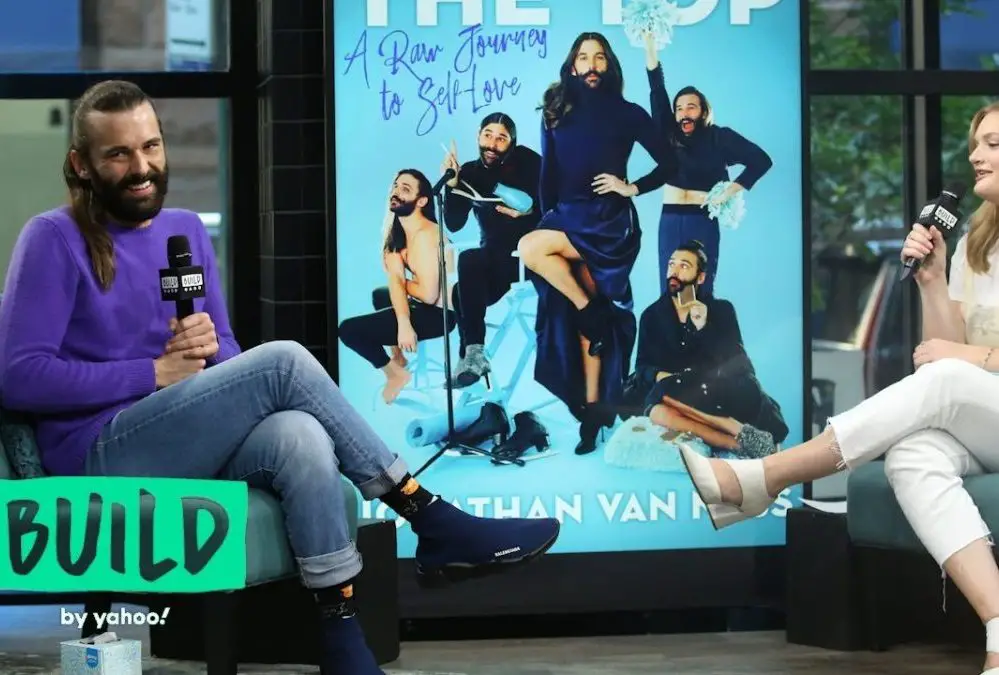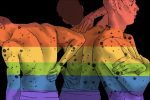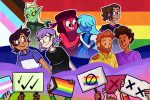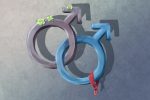Known for being the ultra-lovable, bubbly “gay Jesus” on Netflix’s hit show “Queer Eye,” Jonathan Van Ness inspires others to be themselves, because he is unabashedly himself. Van Ness is the grooming expert, helping his heroes develop a hair and skincare routine appropriate for their lifestyles in order to feel and be their best selves.
So, it was all the more shocking when Van Ness revealed there was a part of himself that he had been hiding from the public for the past couple of years: Around seven years ago, Van Ness was diagnosed with HIV.
People often feel like they know celebrities because of the all-access nature of social media these days. It’s easy to forget that an online persona is cultivated and is an intentionally ideal representation of lives that are otherwise unknown. Vulnerability in the public eye has a terrifying certainty of relentless scrutiny.
The response could range from an outpouring of love and support to flabbergasted disbelief and hatred. Considering the history of HIV and the marginalization of the LGBTQ+ community, Van Ness’ coming out is a massive step forward, but also a reminder of how far society still has to go to achieve equality.
https://www.youtube.com/watch?v=KB6YyUmpNmU
Growing up amidst the HIV/AIDS crisis, where a diagnosis seemed like a death sentence, HIV was the thing Van Ness feared. In his new memoir, “Over the Top: A Raw Journey to Self-Love,” Van Ness revealed, “That day was just as devastating as you think it would be.”
While working at a salon with a client, Van Ness had not been feeling well but decided to push through the day, until he suddenly passed out. The next day, he went to Planned Parenthood and tested positive for HIV. The old trope of blaming HIV on a singular instance of lapsed judgment emerges but it ignores the years of pain and trauma that makes someone more vulnerable to HIV.
Van Ness’ story starts many years earlier in Quincy, Illinois, a relatively homogeneous city where he was bullied for his sexual orientation, a story familiar to those in the LGBTQ+ community. Rumors and speculation, humiliation and embarrassment, microaggressions and outright insults — it’s like a thousand little paper cuts that lead to a wound deep in the heart and soul of a human being.
These wounds rarely get the chance to heal, since queer people have to navigate the world wondering if each and every person they meet will accept who they are and if they are even physically safe to simply be themselves, opening and re-opening the wells of pain from the past. In this context, self-esteem becomes a concept, an impossible dream rather than a reality.
With the suck-it-up nature of toxic masculinity and the downplayed importance of mental health, coping mechanisms develop that are often self-destructive. Van Ness would spend hours of his teenage years meeting up with older men from AOL chat rooms, seeking validation he didn’t receive from peers. He flunked out of his first year of college after discovering cocaine, which he funded with money from selling his body for sex.
His high-risk behaviors didn’t stop in his twenties. Van Ness continued trying to fill the void from his childhood, even if temporarily. He was sent to rehab multiple times for methamphetamine and had an episode of binge eating donuts after his stepfather died, gaining 70 pounds in three months.
Contrary to expectations of HIV positive people in the 1980s, Van Ness has done more than survive; he has thrived. He has a world tour lined up with his comedy shows (which may or may not be a guise to show off his tumbling skills). He has recently taken up figure skating and took to the ice with renowned figure skater Michelle Kwan on an episode of “Queer Eye.”
Did anyone mention the two Emmy nominations he received for “Queer Eye” and “Gay of Thrones,” a short-form parody of the hit series “Game of Thrones”? Oh, and “Queer Eye” was renewed for two more seasons, bringing their total up to five, as they wrapped up filming the fifth season in Philadelphia this summer. Let’s not forget the two kittens he adopted in August either.
It’s safe to say Van Ness is doing well, but it’s far from safe to say that people know what it means to live with HIV in 2019. Since the 1990s antiretroviral treatment has allowed people living with HIV to manage it as a chronic condition, assume a normal life expectancy and suppress HIV so it is untransmittable to a sexual partner.
While Van Ness’ coming out as HIV positive is a marker of changing social attitudes towards HIV, an outdated and simply inaccurate view of HIV still permeates the mainstream today. It’s an unfortunate cyclical relationship: Those who are marginalized and discriminated against are more vulnerable to HIV, and those living with HIV are more vulnerable to experiencing even more marginalization and discrimination.
HIV is a death sentence. HIV is only a gay issue. HIV is their fault for being irresponsible. These are some examples of how fear from the 1980s crisis trickles into false beliefs today. The stigma and fear created by these stereotypes have real-life consequences. People are shunned from and unwelcome in public spaces. People refuse to seek medical help because of fear of judgment. Roughly one in eight people living with HIV are actually denied health services because of stigma and discrimination.
https://www.instagram.com/p/B2uFEKFg9pb/?utm_source=ig_web_copy_link
Van Ness has opened a window of opportunity for HIV awareness and education that will hopefully stay open. The “Queer Eye” star didn’t let HIV define him. He is already an example for everybody to own who they are and take time for self-care.
Through his brave choice to share his story with the world, Van Ness also becomes a powerful role model for those who are often left feeling isolated because of their HIV status. Next time I set foot in a bookstore, I’ll be sure to pick up a copy of Van Ness’ memoir, “Over the Top: A Raw Journey to Self-Love.”
















